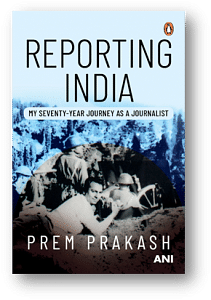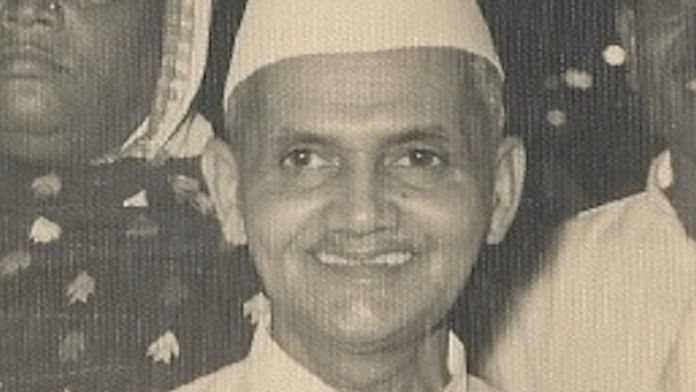During his lifetime, Panditji had clearly indicated that Lal Bahadur Shastri should be his successor. He inducted him into the cabinet to administer the prime minister’s office as a minister without portfolio. Many of us could see the signs that the next PM would be a camera-shy man and not much of an orator as compared to Panditji, and we used to wonder what it would be like in the future to cover the PM’s events.
Shastri was first elected to the Lok Sabha in 1952 and was subsequently made minister for railways and transport. His probity and integrity in public life was recognized by a particular event in November 1956, when he resigned as railways minister, taking moral responsibility for a train crash in Tamil Nadu in which some 142 people were killed.
This selfless act saw Shastri’s popularity surge. Nehru reappointed him to the ministry for home affairs in 1961, where he gained a reputation as a skilful mediator. Nehru described Shastri as a man of the highest integrity. The Congress party finally chose Shastri as Nehru’s successor, and he was duly elected by the parliamentary party before being sworn in on 9 June 1964 as India’s second prime minister. The Congress party had carried out Nehru’s wish.
My association with Shastriji went back a long way. We interacted a lot when, as a member of the Delhi Union of Journalists (DUJ), I was called on to form a cooperative society with the job of finding housing accommodation for journalists. With the imposition of Fabian socialism, which Nehru adopted from the United Kingdom, it was no longer possible for private developers to offer land or houses for sale. The government had created the Delhi Development Authority in 1957 to deal with housing needs. Fabian socialism, though its proponents claimed it was different, functioned almost like a communist state economy. The only concession given was, perhaps like in communist countries, to allow a group of people form a cooperative and acquire a piece of land from the government to develop for their own purposes.
Also read: Anchors almost killed TV news in 2020. What Indian media must do in 2021
Houses for journalists
When Shastri was the home minister, my colleague, the late B.C. Saxena, and I would call on him regularly to plead for land to be allotted to the cooperative society. But in India it is not easy to get people to work together. While the DUJ society was the largest of the four journalist societies, there were three other associations of journalists—Press Association, Press Trust of India Employees Association and Times of India Officers Association. It was quite a headache, but finally recommendations were made and the four societies were told to join hands, to form a coordination committee and select a piece of land from the plots being offered.
I remember Shastriji would discuss matters in a very friendly way. He would ask if we would be able to run the cooperative society. ‘Aap log chala paoge isko? Bahut badnami ho jati hai aise kaam karne mai (Will you be able to run this? Such ventures can bring much embarrassment to the persons running them).’
We assured him that we could manage, and we did manage. For me and B.C. Saxena and the others, led by the late K. Subrahmanyam, getting this enterprise launched was no mean feat. We were able to deliver 325 plots to 325 journalists in what is today one of the prime locations in New Delhi. It was almost a jungle in those days!
Naming the colony called for much deliberation. There was a huge debate between two camps: journalists who worked for the Hindi media and those in the English-language press. I suggested the name Gulmohar but many thought it to be Urdu and inappropriate! But the late J.M. D’Souza, manager of the Times of India, Delhi, argued very convincingly for the colony to be named Gulmohar Park.
Nonetheless, others still opposed the name on the grounds that it was Urdu. Some thought the name should be Journalists Colony. But finally, the name Gulmohar Park was approved, although we compromised again and ended up with Gulmohar Park Journalists Colony. It was Shastriji’s great gift to the journalists of Delhi.
 This excerpt from ‘Reporting India: My Seventy-Year Journey As A Journalist’ by Prem Prakash has been published with permission from Penguin Random House India.
This excerpt from ‘Reporting India: My Seventy-Year Journey As A Journalist’ by Prem Prakash has been published with permission from Penguin Random House India.




Wow journalists being allocated land by the discretion of the government, as a favour maybe. Such journalists are expected to write freely and frankly on it’s patron’s misdemeanors. J. Nehru created this mai-baap Sarkar to which the fourth estate was beholden. No wonder they still sing paens to him. Successive governments followed this policy by arranging to wine and dine and free foreign jaunts to favoured hacks. Very convenient set-up. Looks like the present government has discontinued this so no wonder it gets so much bad press.
Great Indian journalists started Licking congress immediately after Indian partition 1947 , that’s the reason journalists became rich with free land and money in return of services to congress party.